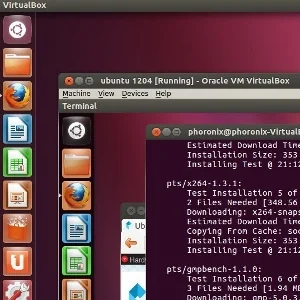VMware Lands SVGAv3 In Mesa 22.2 For Their Virtual Graphics Device

VMware long has supported 3D guest VM acceleration -- they acquired Mesa-makers Tungsten Graphics after all with Mesa creator Brian Paul. SVGAv3 is the latest iteration of their exposed virtual graphics device, which their open-source Linux graphics stack has seen a lot of work in recent months to support.
Last year the SVGAv3/SVGA3 Linux kernel support landed in VMWGFX DRM while now the Gallium3D OpenGL support has been merged into Mesa 22.2. As explained in the prior article on it, the SVGA v3 virtual device aims for efficiency and modernization improvements. VMware v3 now uses MMIO for register accesses, MSI-X support, and deprecating or removing lots of old functionality. In addition to modernizing the virtual device and resulting driver code, some performance improvements can be expected from this work. With SVGA v3 also comes the ability to enjoy 3D guest acceleration on 64-bit ARM.
VMware has merged support for SVGAv3 into Mesa 22.2. SVGAv3 is the latest update to their virtual graphics device for allowing 3D guest virtual machine acceleration with VMware's virtualization products.
SVGAv3 changes the PCI id due to differences in how PCI configuration is handled - removal of VRAM and FIFO PCI resources, switch to MMIO registers and MSI/MSI-X IRQ support but the 3D commands remain largely the same.
This enables 3D/graphics acceleration support on SVGAv3.
It's great seeing VMware continue working on their SVGA open-source graphics support while for the fully open-source Linux virtualization space outside of VMware, Virgl continues to be worked on by the community and is becoming in increasingly great shape and very capable after a late start compared to the likes of VMware SVGA or VirtualBox graphics.
5 Comments

